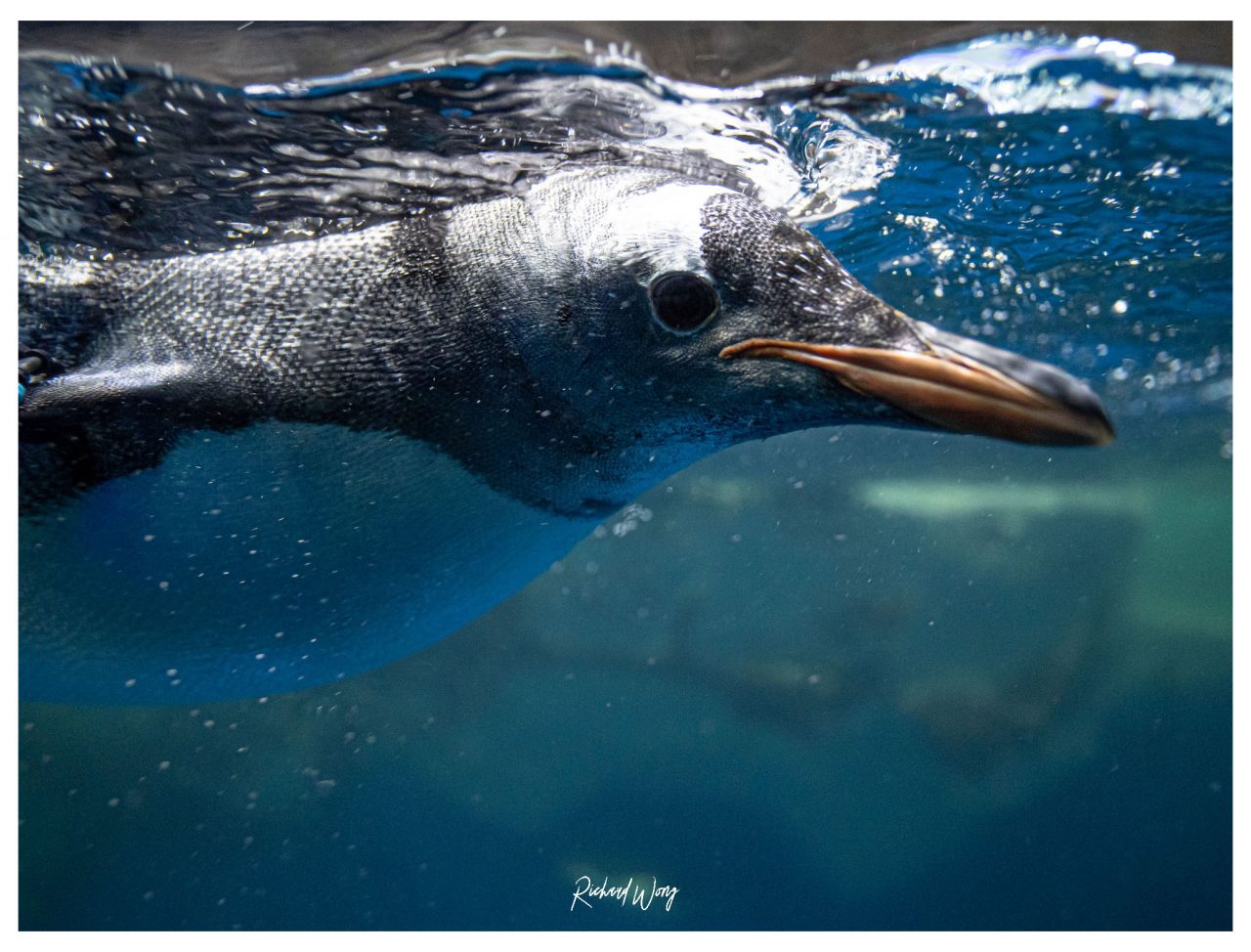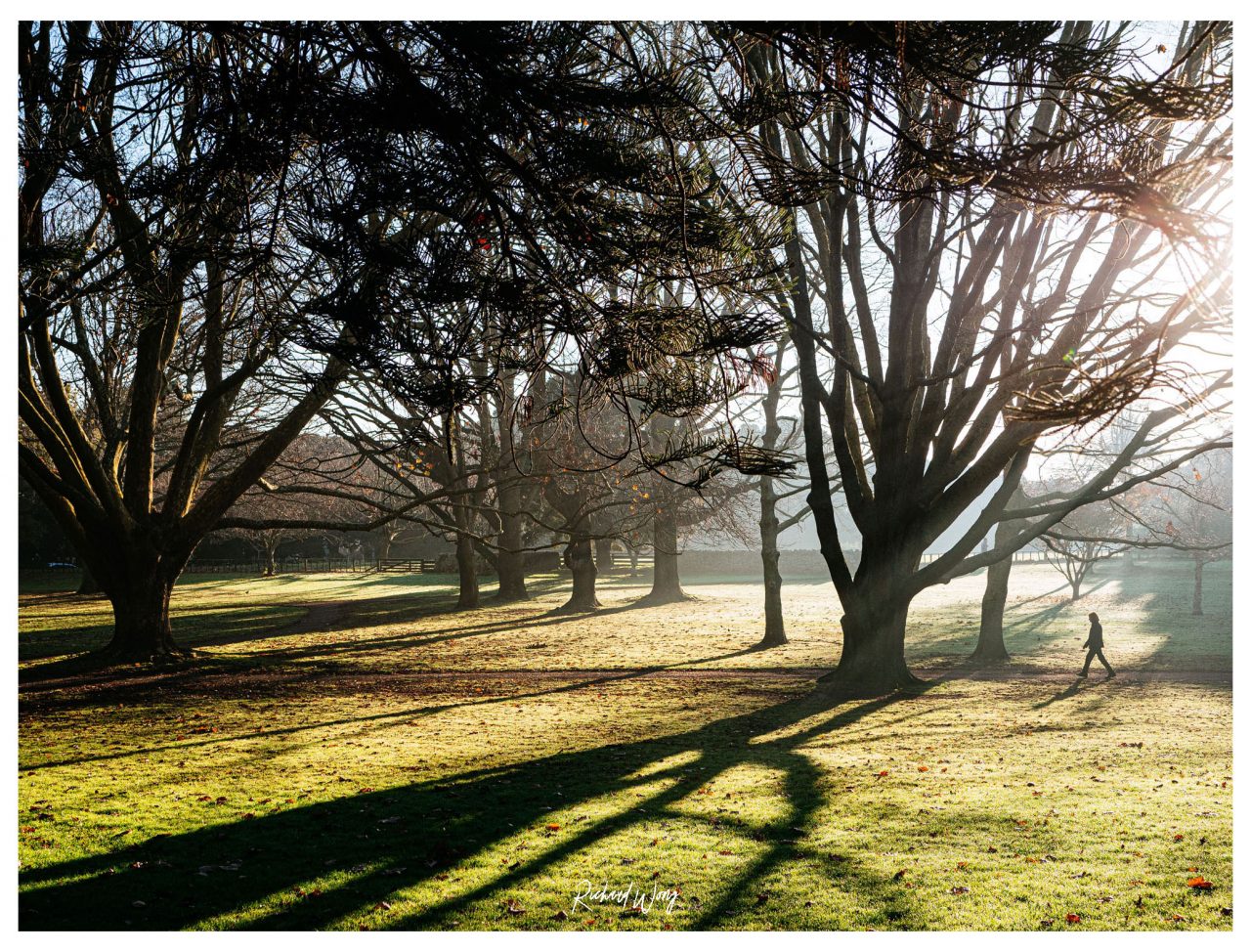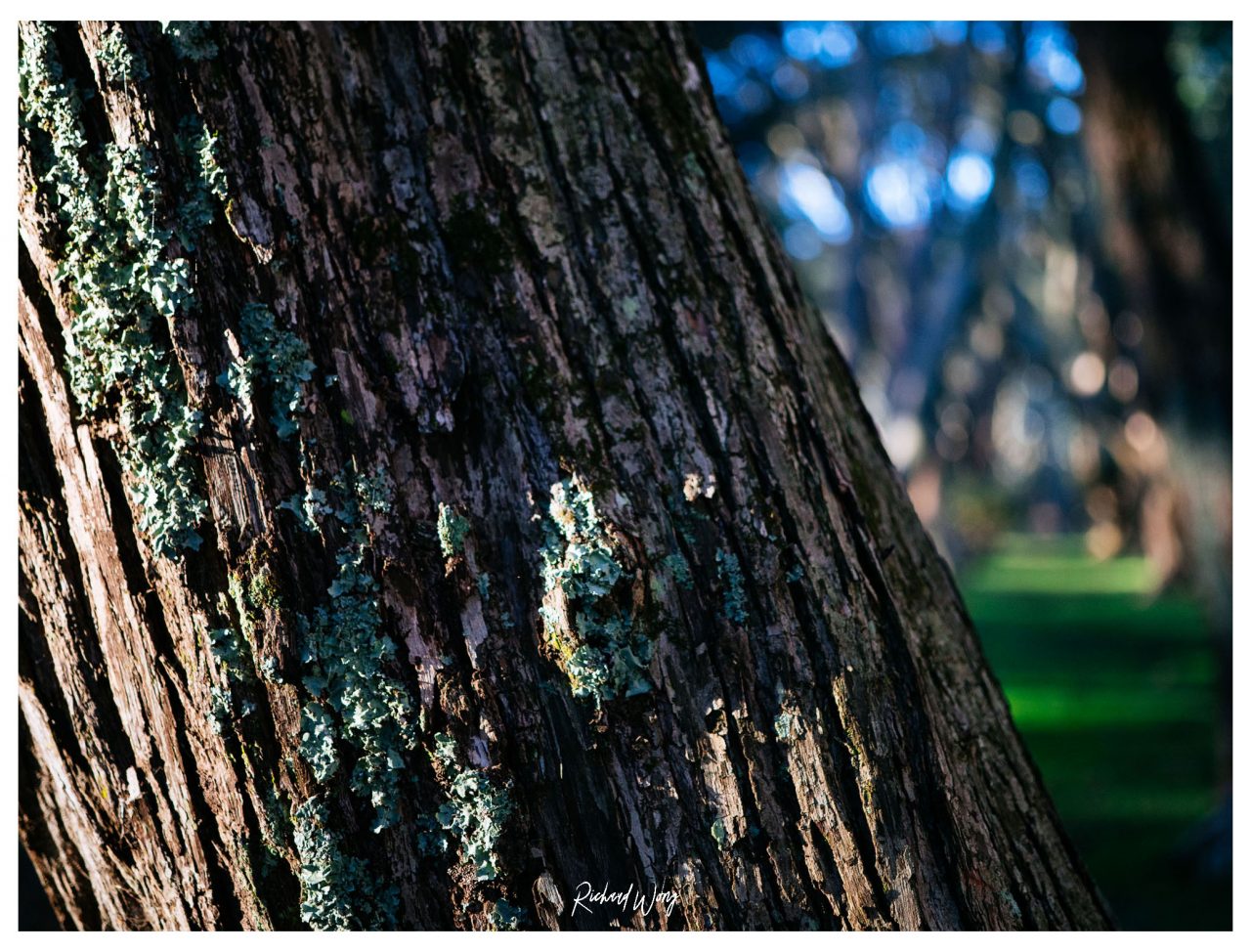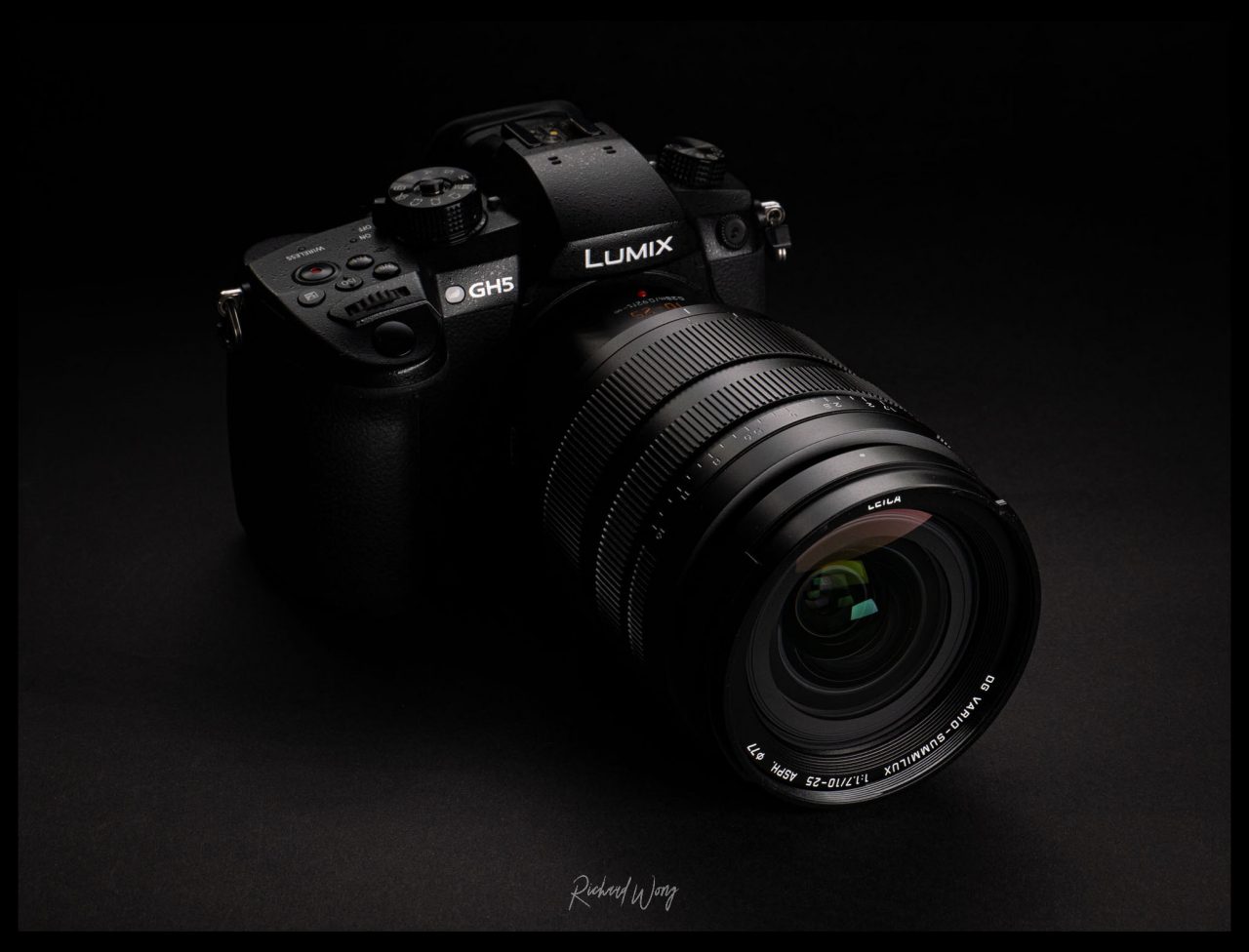
Announced last year alongside with their full frame S system, the Leica 10-25mm f/1.7 is Panasonic’s statement that they are still fully committed to their micro four thirds system. And I’ve received a sample of this lens so in this review we are going to have a look at how this fastest zoom lens from Panasonic and Leica performs in real life.
Build Quality / Design
Size of the lens is quite large for a micro four thirds lens. Noticeably bigger than the 12-60 kit lens or even the standard 12-35 f/2.8 lens. It’s almost the same size as the Canon 24-105mm f/4. The weight of the lens is 690g, once again, quite heavy in micro four thirds standard.
When the lens is mounted on my G85, it definitely feels a bit front heavy. I imagine it will be even more front heavy if you mount it on a GX9 or other similar cameras. But when paired with the GH5 or G9, it feels well balanced thanks to the bigger body and grip.
Just like most other Leica lenses, there is an aperture ring at the front the lens, the difference is this is a de-clicked aperture ring and you cannot enable the clicks. I understand one of the main target user group of this lens are videographers who prefer de-clicked aperture ring for smooth aperture transition. But I do really wish Panasonic has implemented a switchable aperture design so for people like me who is mainly a photographer can enable the aperture clicks.
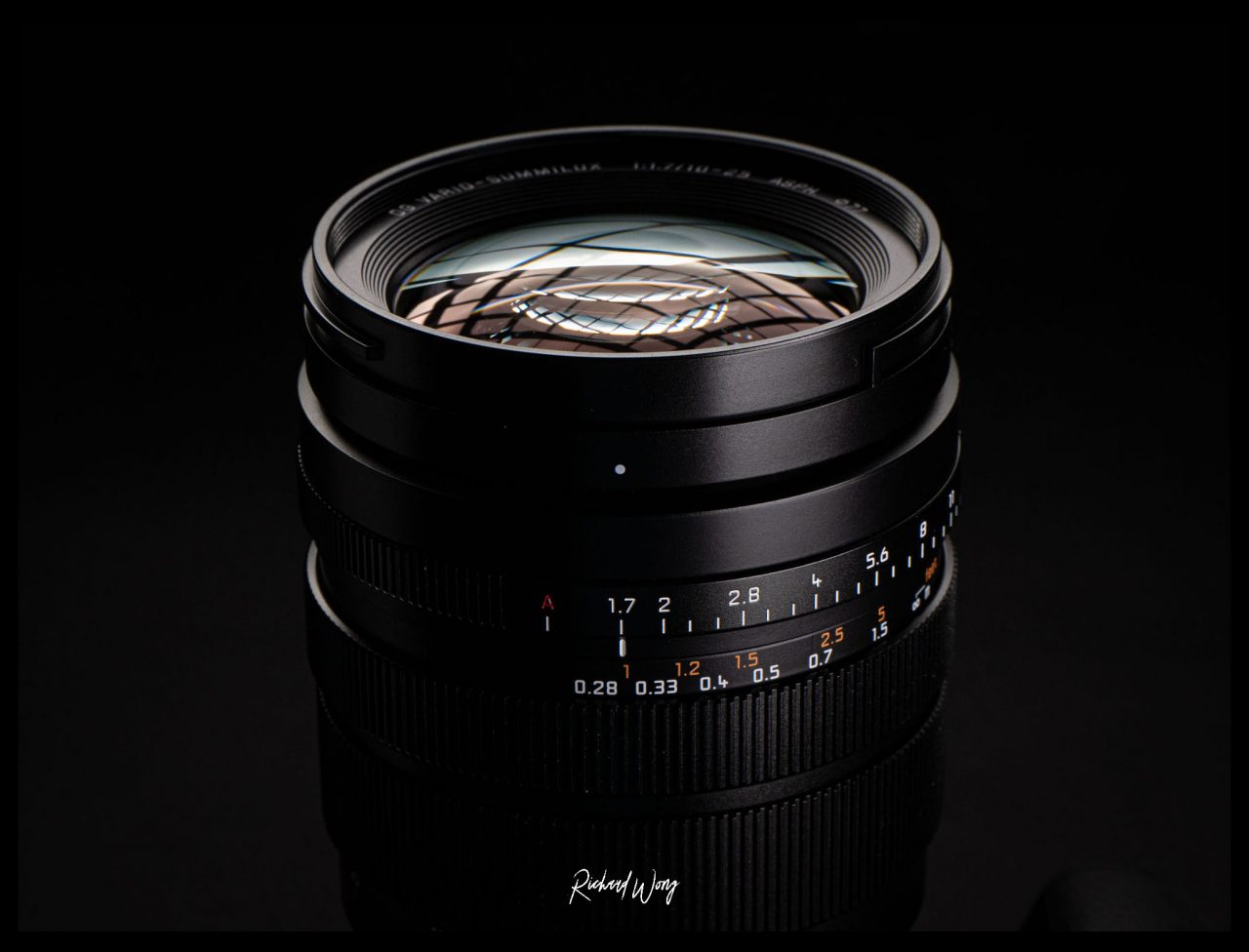
With latest camera firmware for most of the recent and current Lumix cameras , you can set the aperture ring to either do smooth aperture adjustments or 1/3EV adjustments when shooting photos.
The lens has no optical image stabilisation so you have to rely on the camera’s in-body image stabiliser to create smooth and steady video footage.
Below the aperture ring is the focus ring. The focus ring is smooth and it has a clutch action so you can pull the ring down and turn the lens into manual focus only mode. feels very smooth. In manual focus mode, the focus is fly-by-wire. There is no hard stop at the end but you can feel when the focus ring has hit the limit.
Overall, the build quality of the Leica 10-25mm f/1.7 is fantastic. The lens with it’s metal construction feels very solid and well made. It’s probably the most premium feeling micro four thirds lens I’ve ever used.
Image Quality
Sharpness
To see how sharp the Leica 10-25mm f/1.7 lens is, I’ve compared it with two of the Leica prime lenses: Leica 12mm f/1.4 and Leica 25mm f/1.4
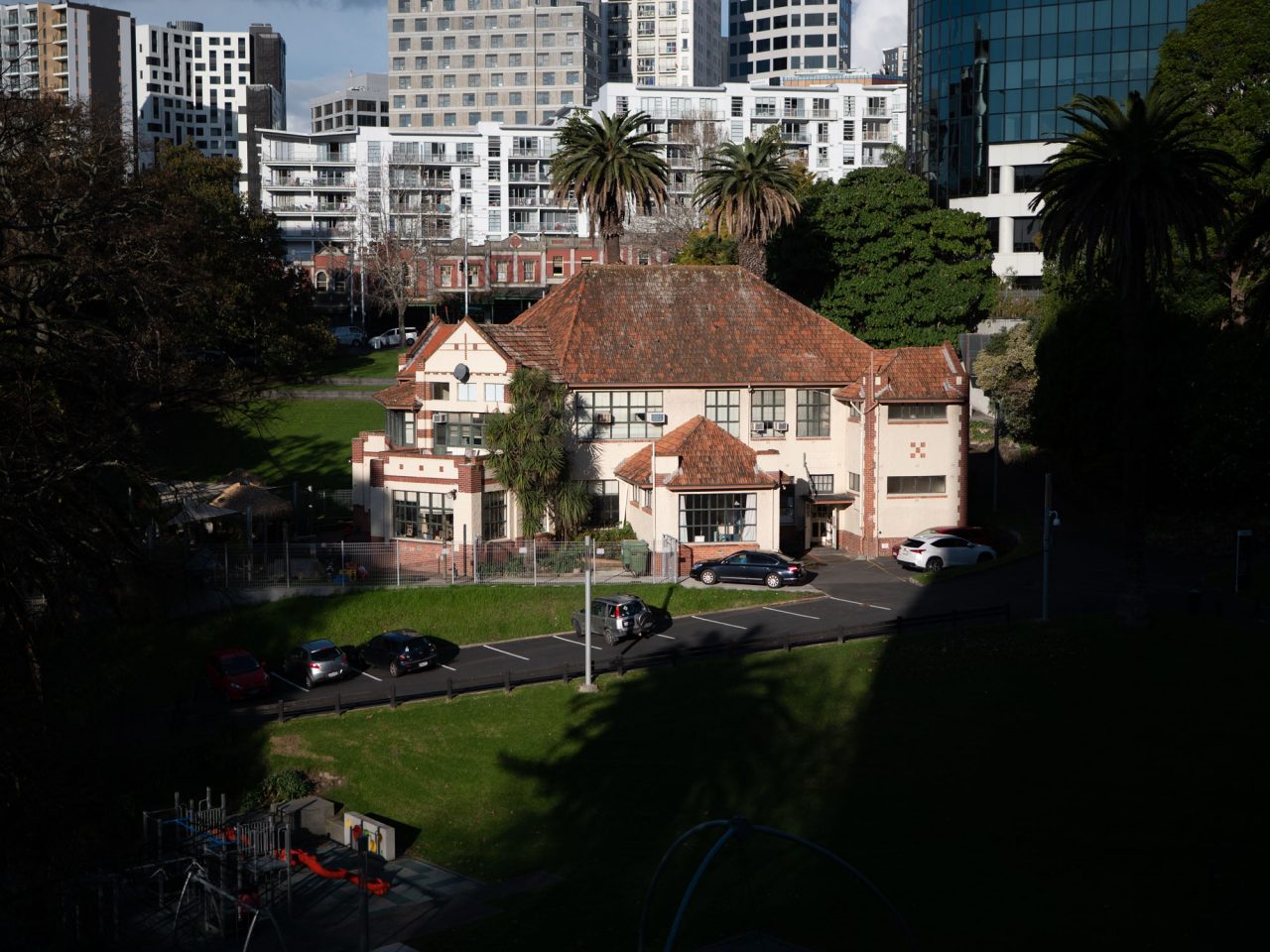
At 12mm, the center sharpness of the Leica 10-25mm f/1.7 is excellent. At maximum aperture, it’s virtually just as sharp as the Leica 12mm f/1.4. i.e. both are very sharp at wide open aperture.
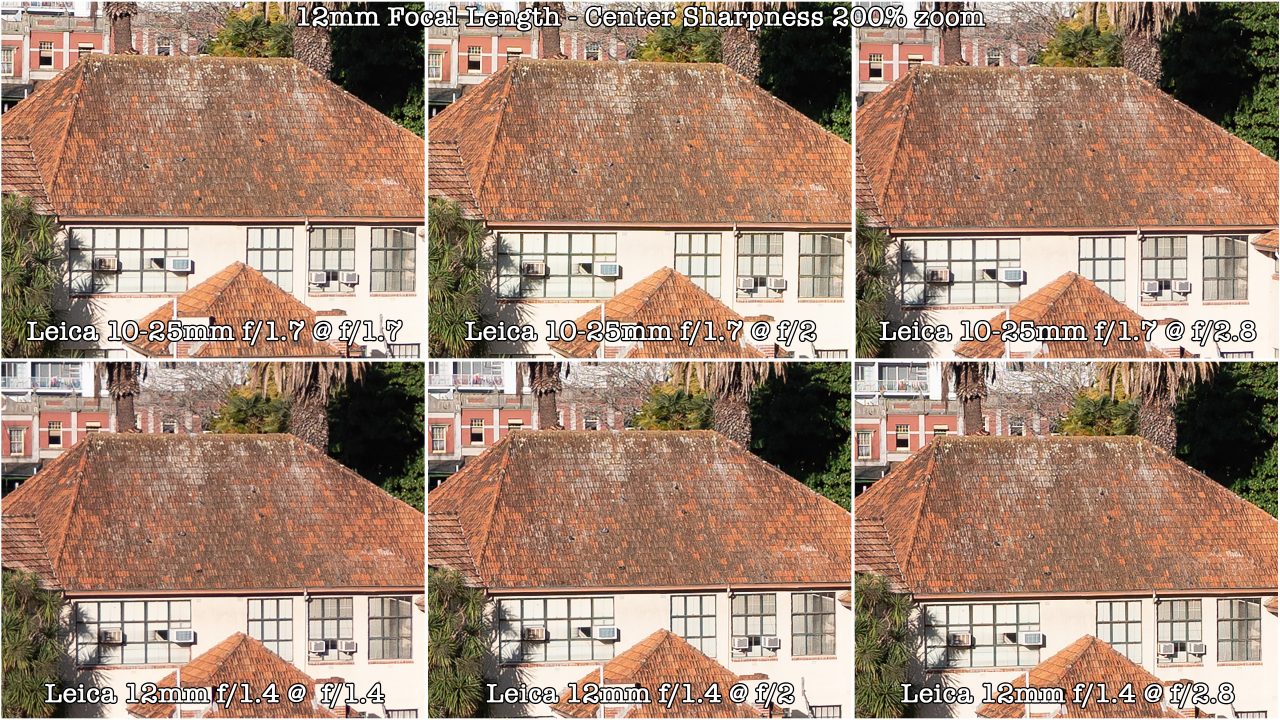
The corner sharpness is also excellent at the maximum aperture. There is very little difference between the two lenses.
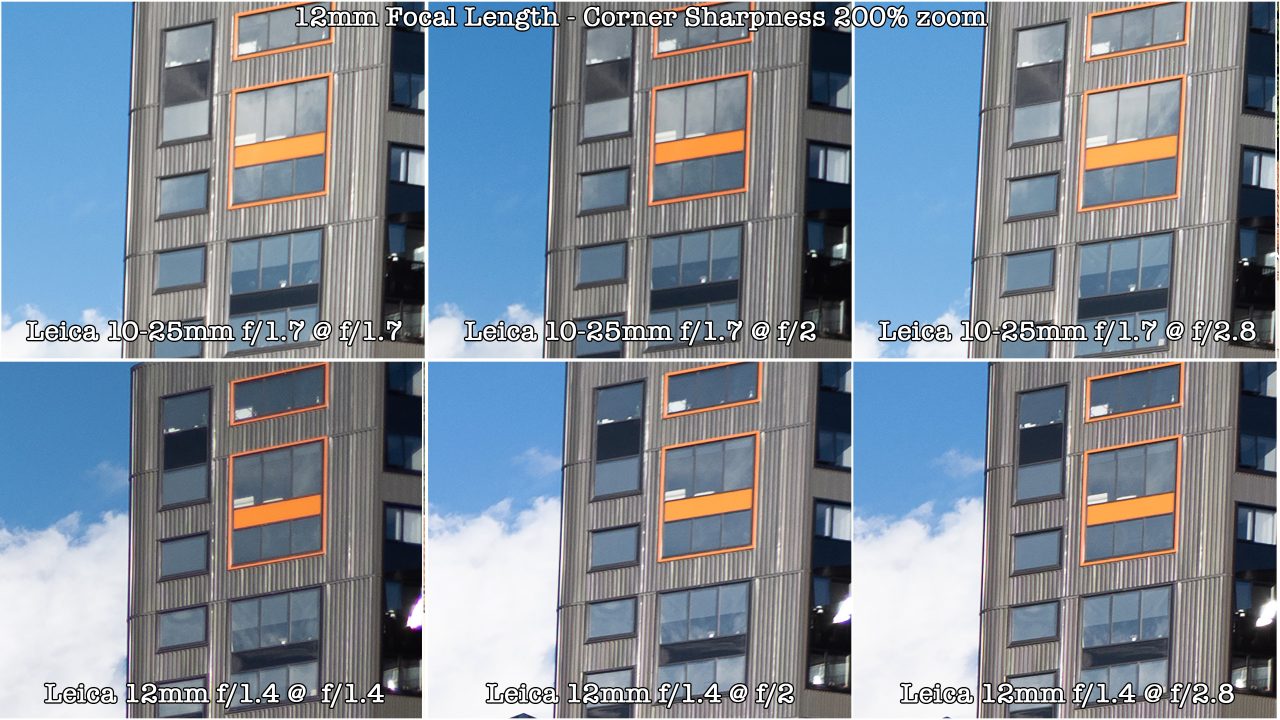
At 25mm, there are some massive differences between the Leica 10-25mm f/1.7 and Leica 25mm f/1.4, and surprisingly, it’s the zoom lens that is the sharper lens.
At the center, the 10-25mm f/1.7 is very sharp at f/1.7 and it is almost as sharp as the Leica 25mm f/1.4 at f/2.8.
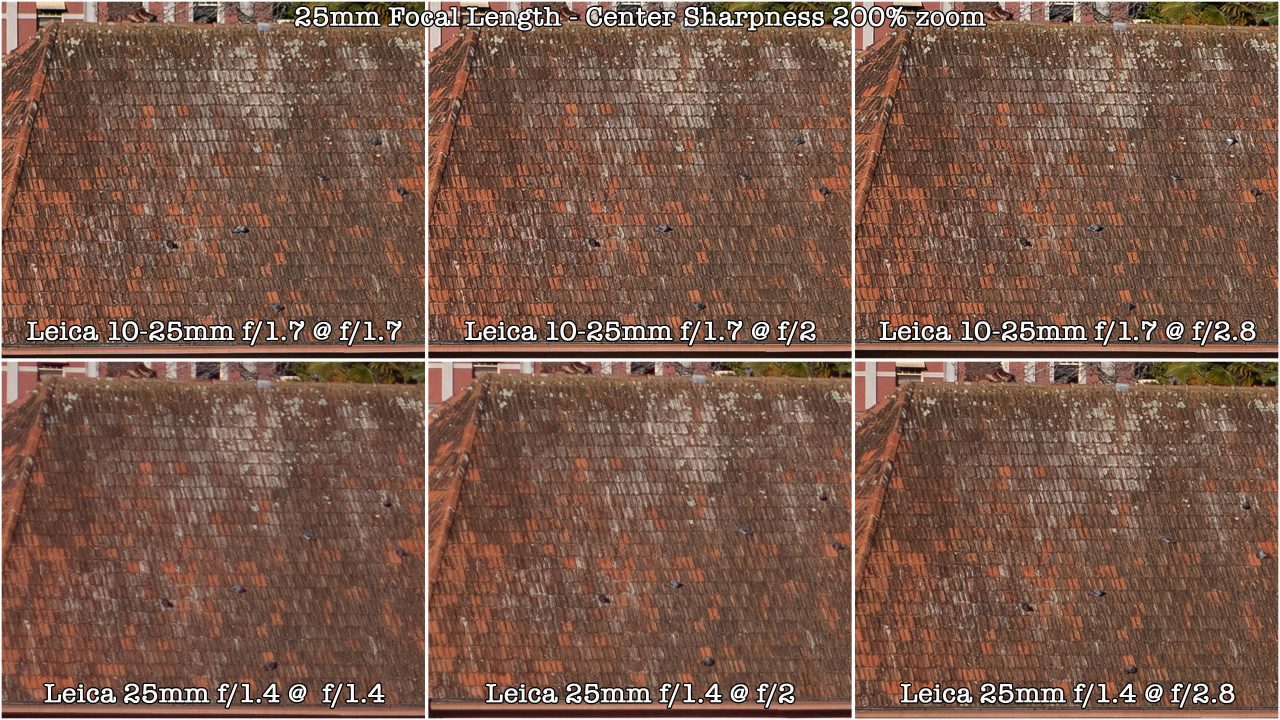
And if we look at the corners, the 10-25mm is also very sharp at the maximum aperture, while the Leica 25mm f/1.4 is still slightly soft even when stop down to f/2.8.
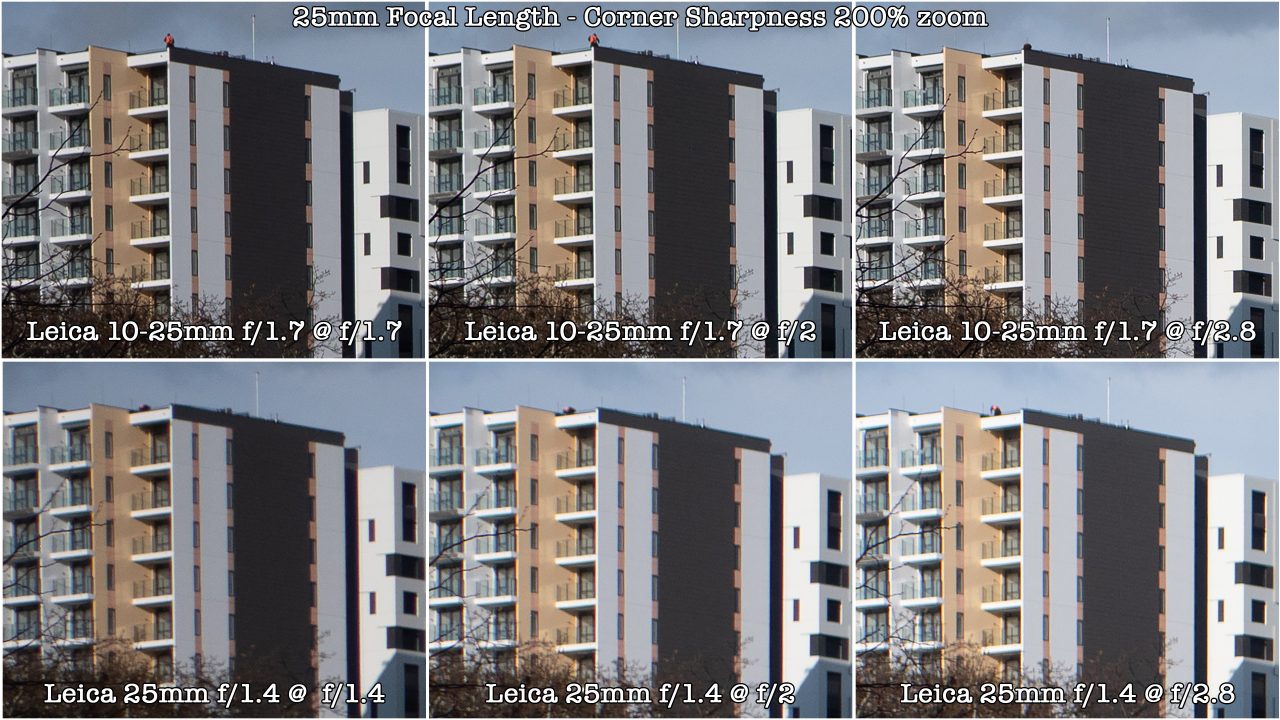
Maybe the Leica 25mm f/1.4 is showing it’s age, but no matter what, the Leica 10-25mm f/1.7 is still very impressive when it comes to image sharpness.
Bokeh
At 25mm f/1.7, bokeh is smooth and quite round. It’s not too different from the bokeh from the Leica 25mm 1.4. But of course the Leica 25mm f/1.4 can go down to f/1.4 to give you more background blur.

When stop down to f/4 . Bokeh from 10-25 is still fairly round, while the bokeh from the Leica 25mm f/1.4 starting to turn into polygon shape.
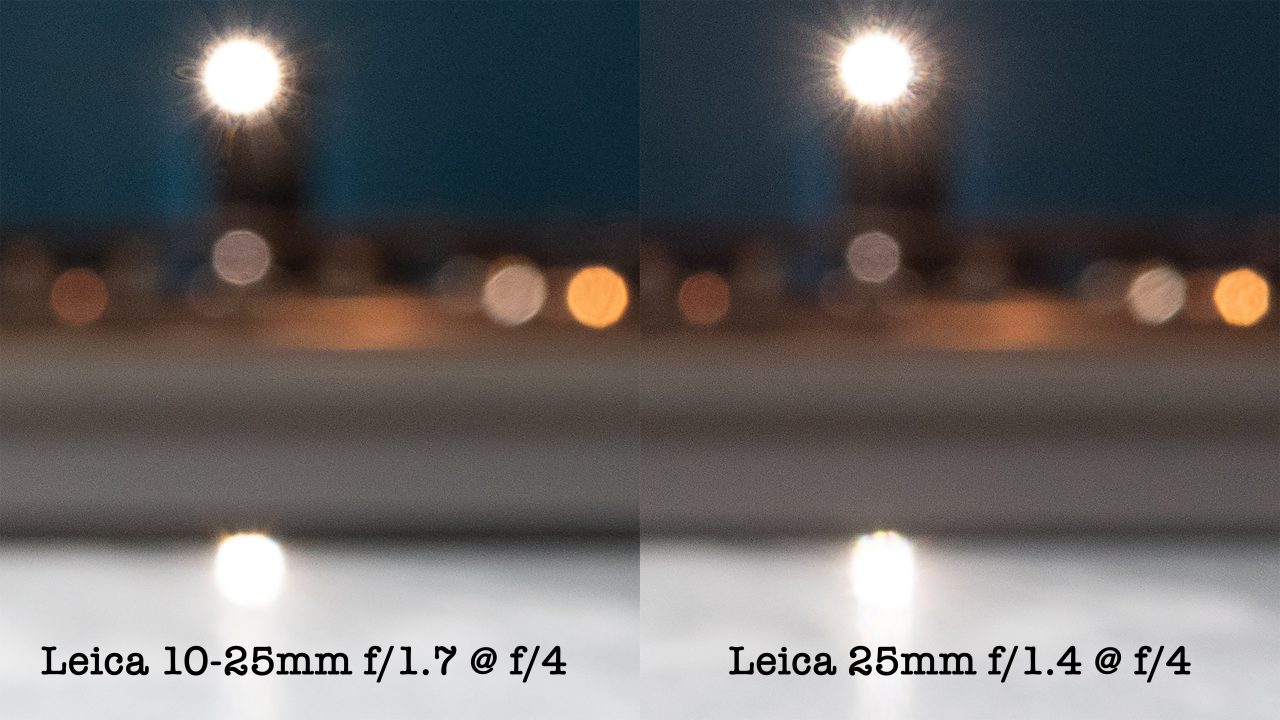
This is probably due to the Leica 10-25mm f/1.7 has 9 rounded aperture blades, while the Leica 25mm f/1.4 only has 7 rounded aperture blade.
Lens Flare
Lens flare is reasonably well controlled and contrast is maintained high as well. However, when there is very strong light source, quite often I would see a bit of ghosting.
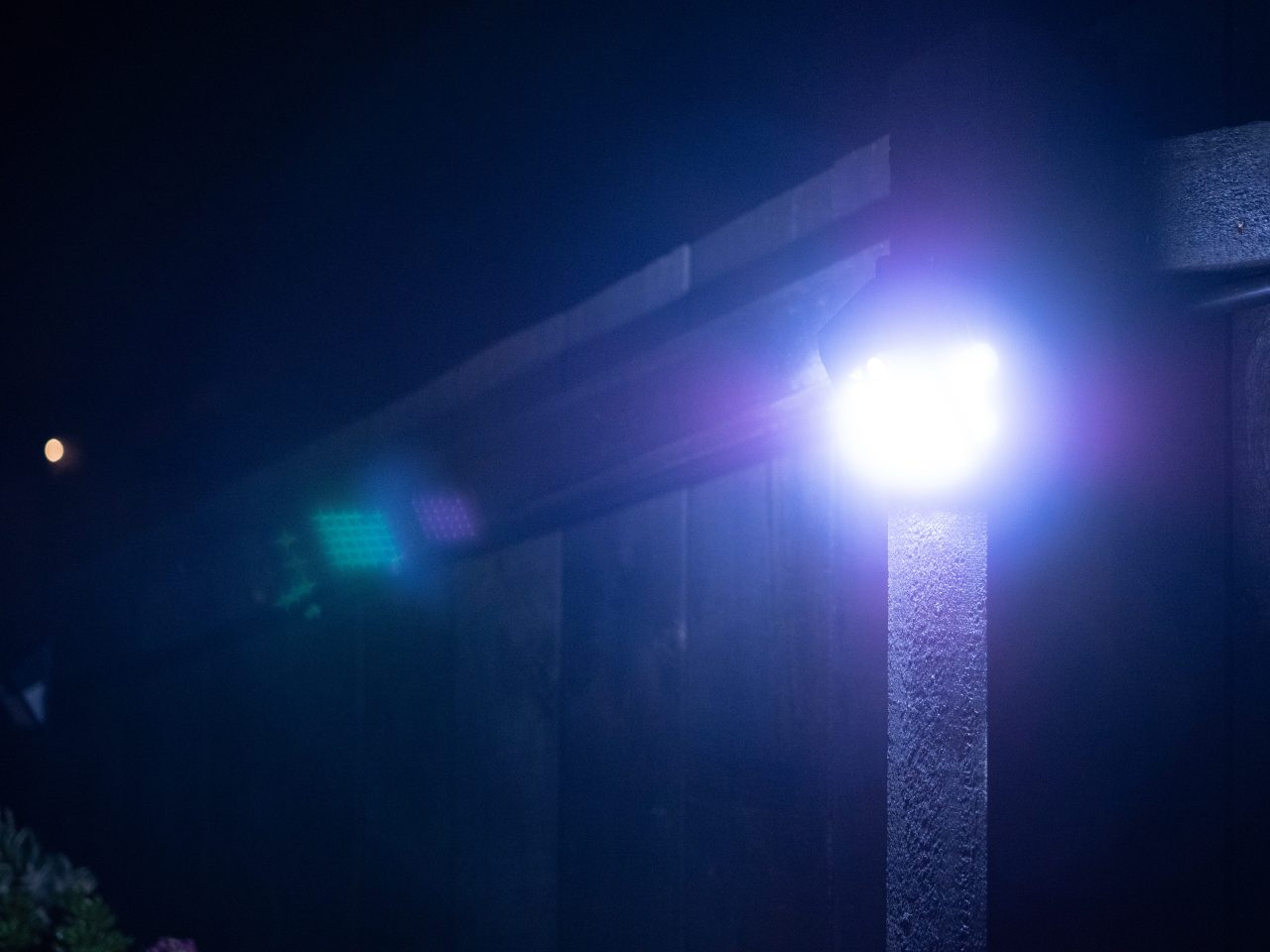
Chromatic Abberation
Chromatic Abberation is also well controlled. The amount of colour fringing is kept at minimum level even when shooting the most challenging scene.
Look at these two comparison photos. One with 10-25 and one with 12mm. Both shot at f/1.7. There is a bit more colour fringing in the Leica 12mm photo when compared to the Leica 10-25mm f/1.7.
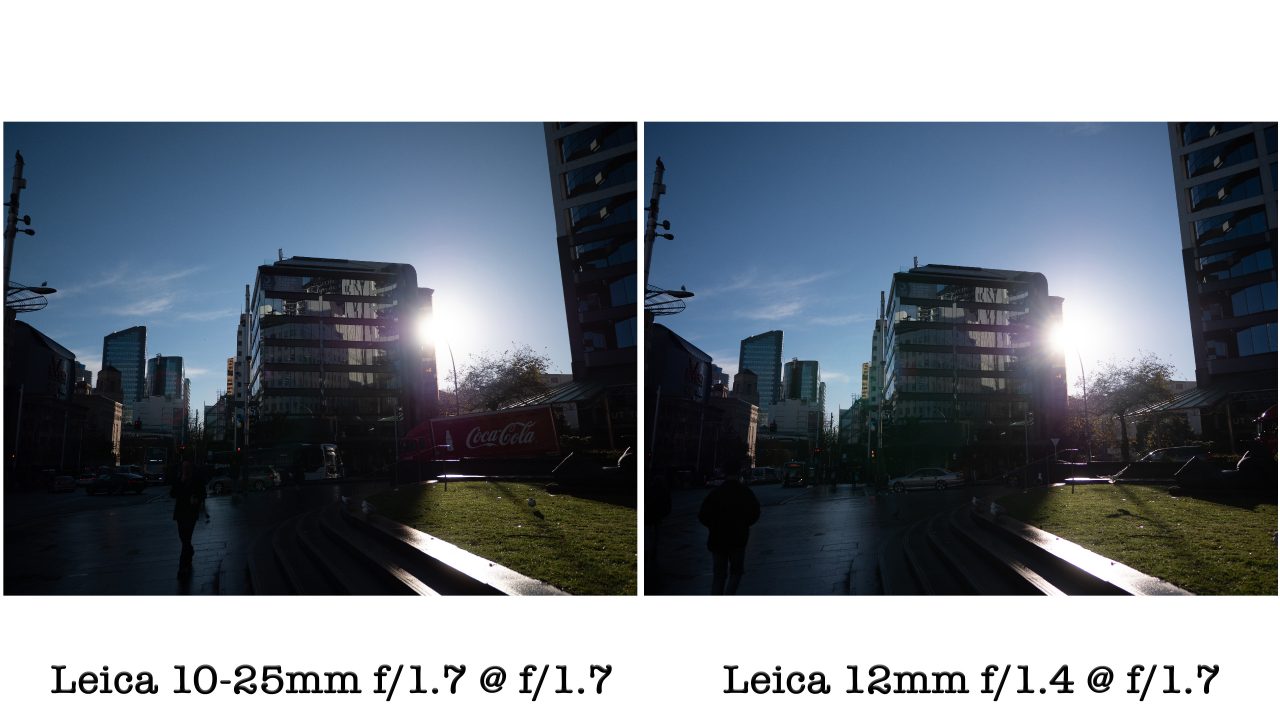
Vignetting
From f/1.7 to f/2 there is noticeable vignetting. from f/2.8 vignetting is not really visible. Vignetting at wide end is a bit stronger than the telephoto end.
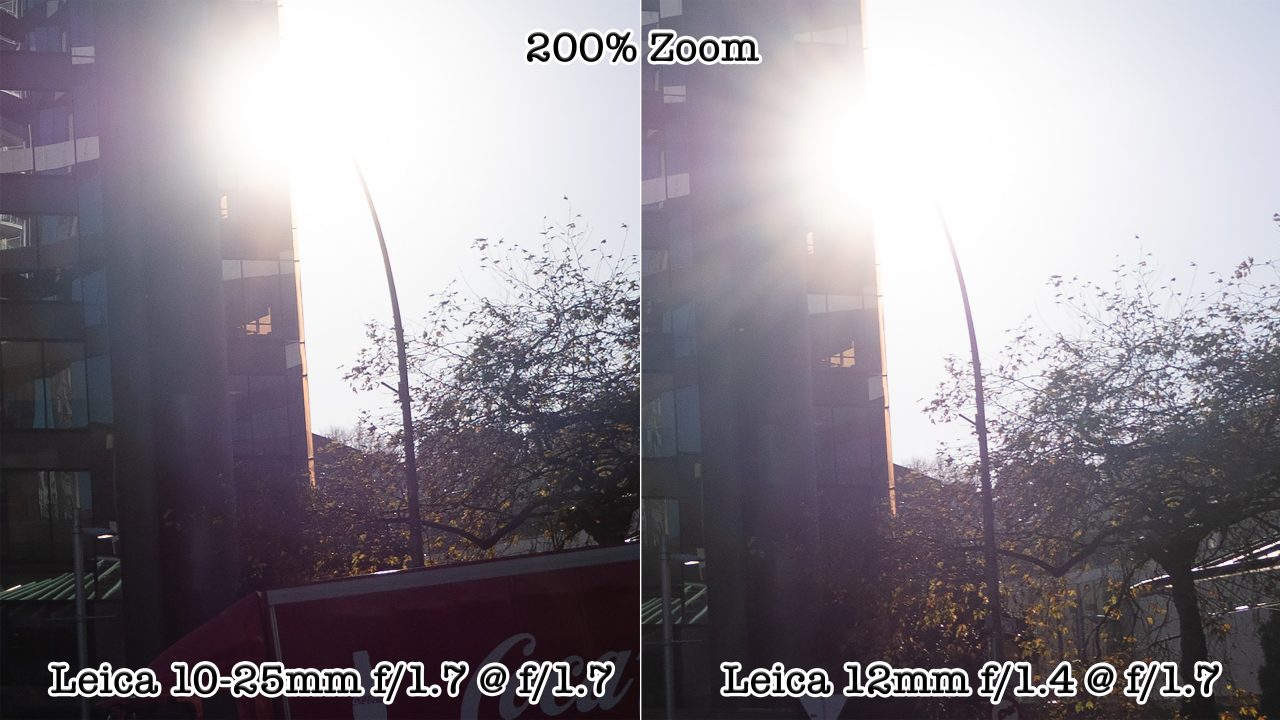
Distortion
Looking at RAW files, all uncorrected.
At 10mm, I can see a bit of Barrel distortion but it’s nothing too serious
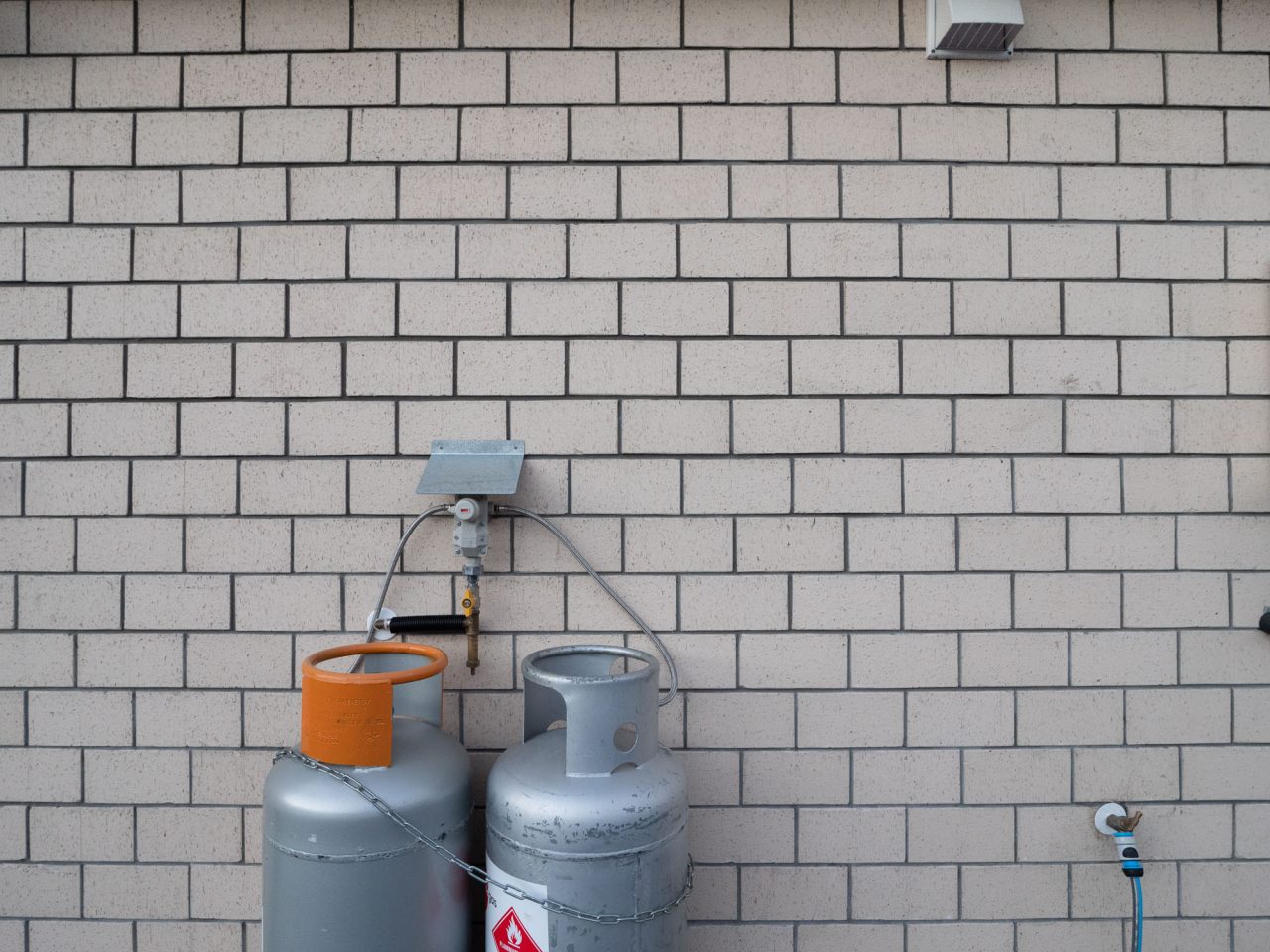
At 12mm, the amount of distortion is very similar to the Leica 12mm f/1.4 lens. This is really impressive consider one is a prime lens and one is a zoom lens.
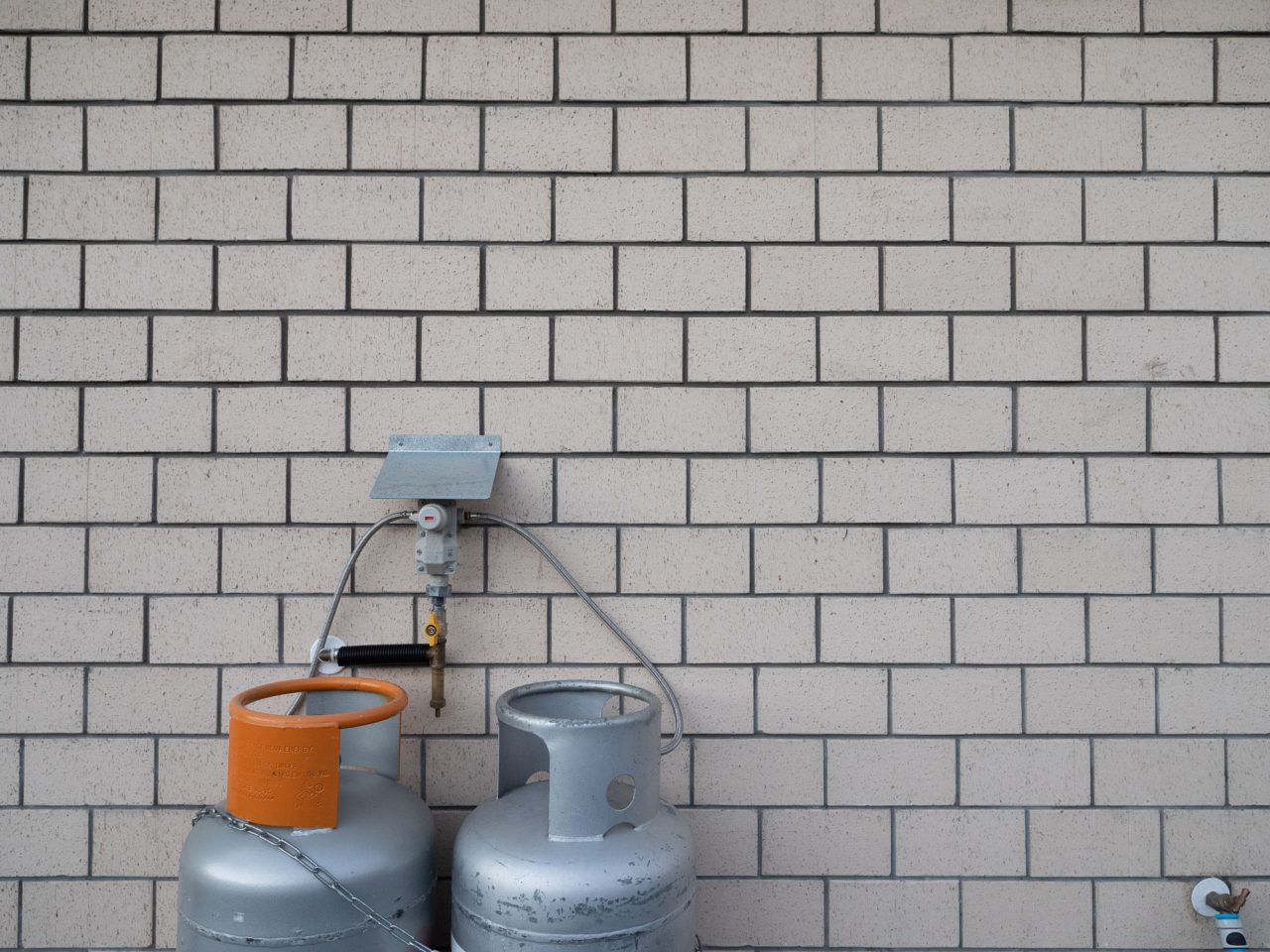
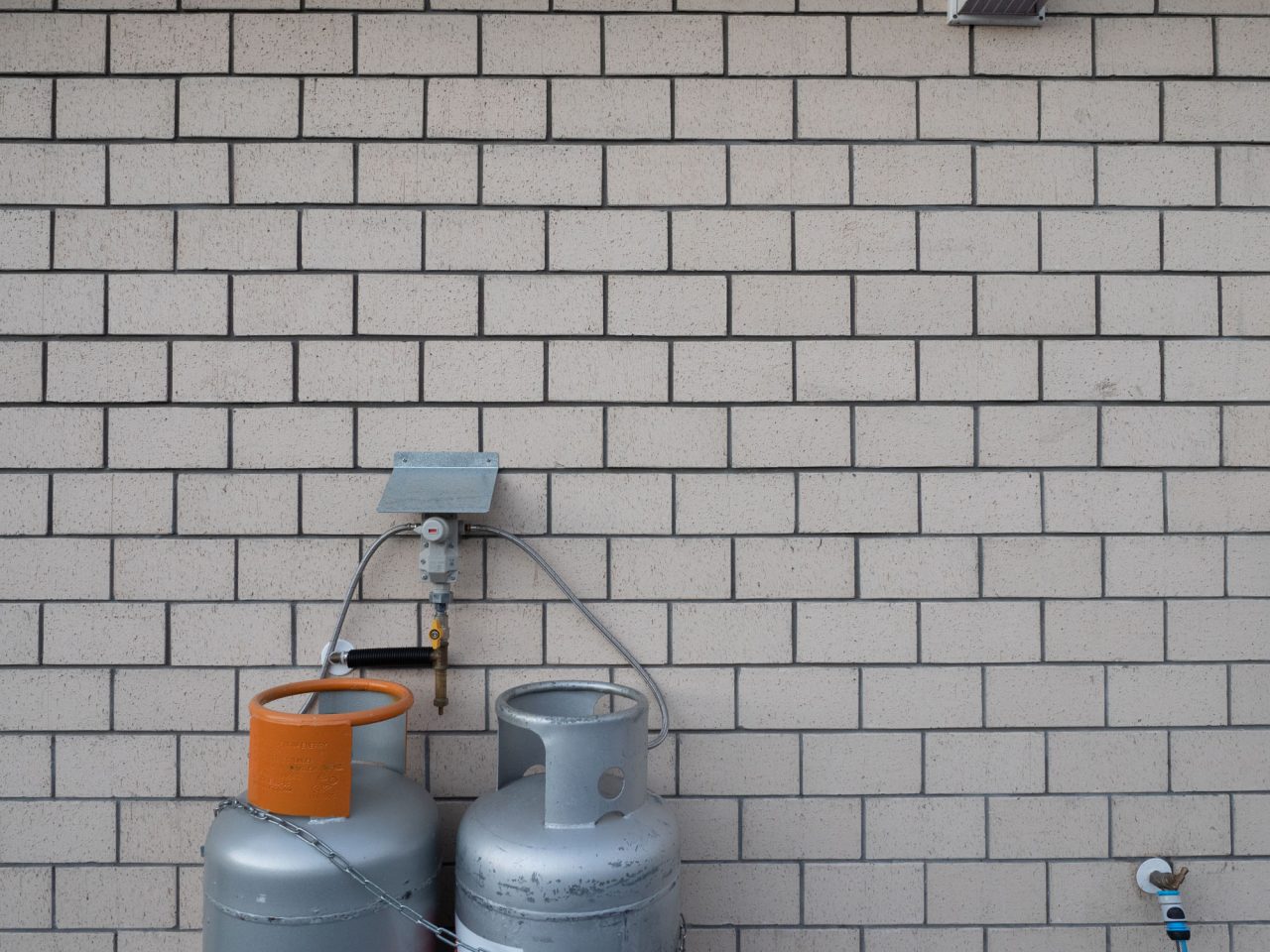
At 18mm the distortion is also really well controlled
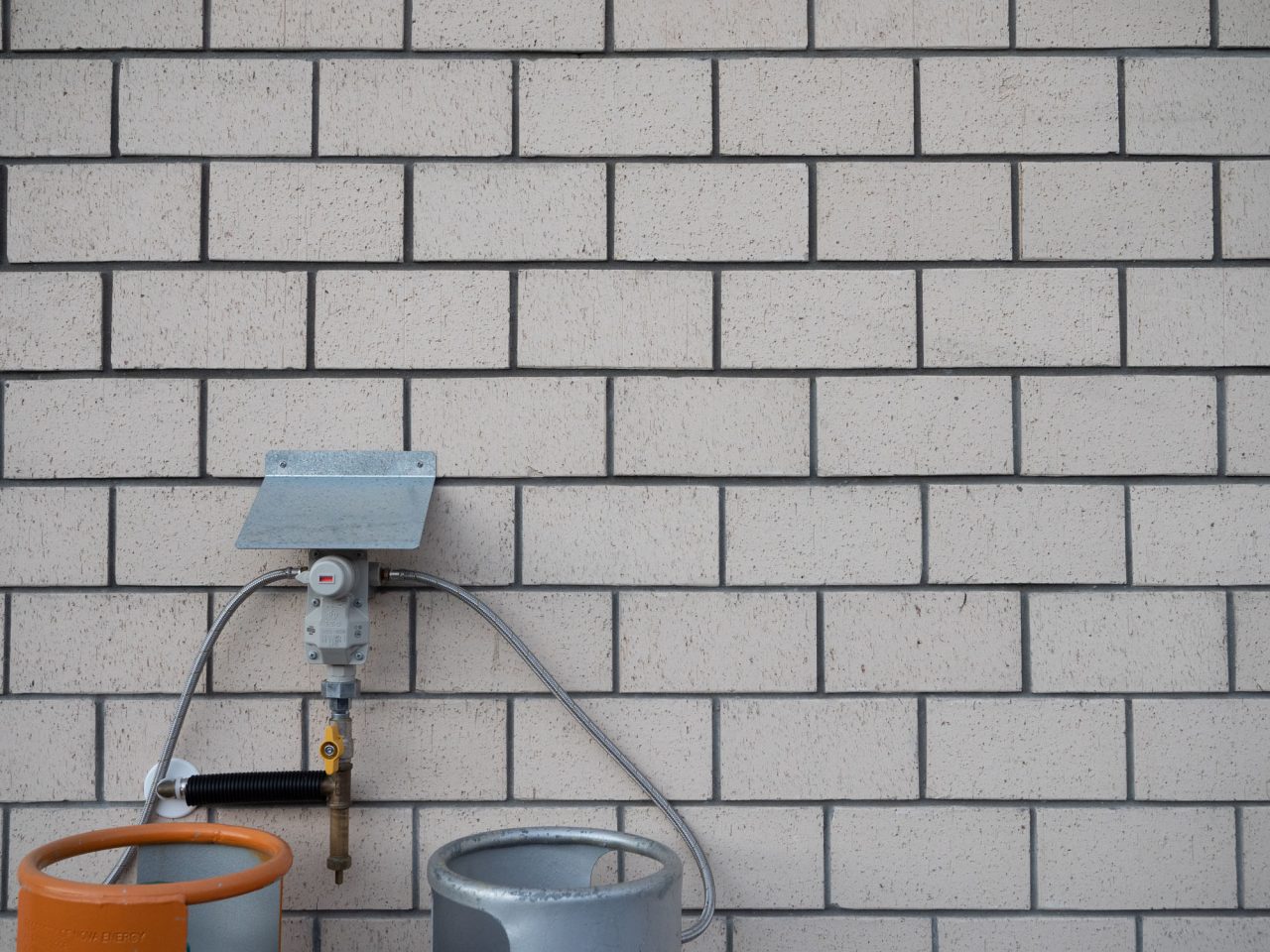
At 25mm it is also similar when I compare to the Leica 25mm, very minimal distortion.
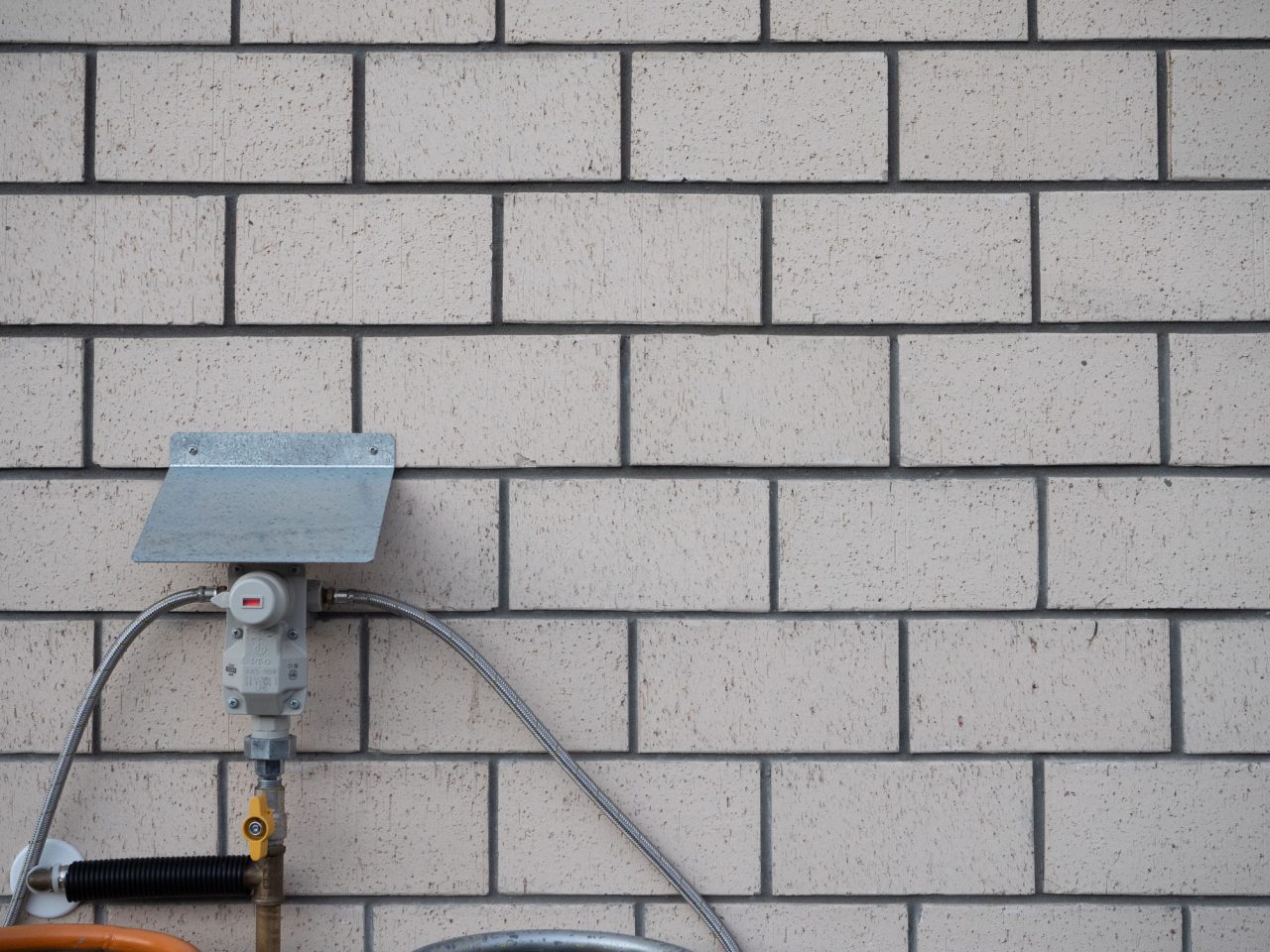
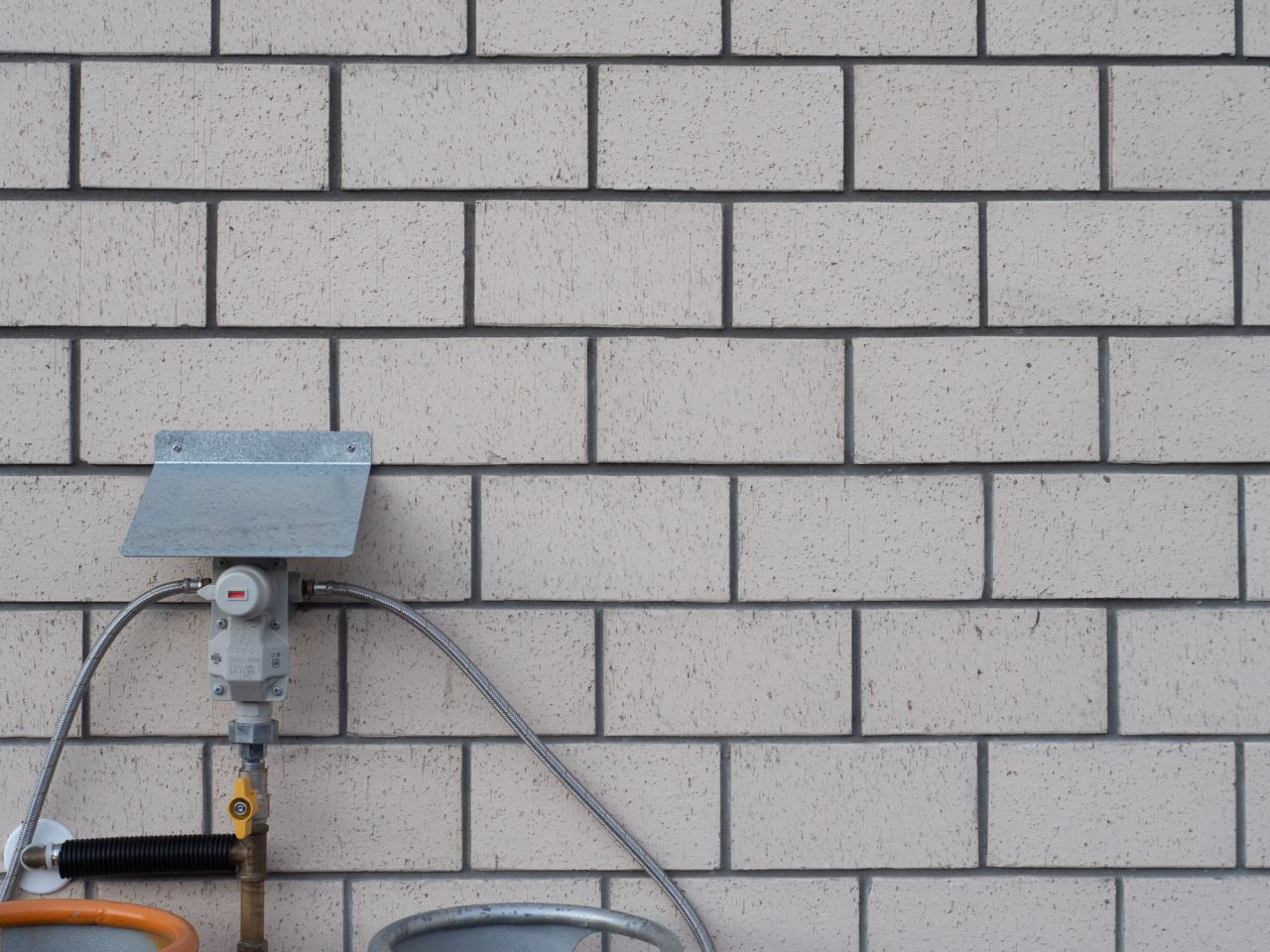
This is a big difference to the lens I was just reviewing last week.
The Tamron 17-28mm f/2.8 has very noticeable distortion across the whole focal length range, which is not uncommon for a wide angle zoom lens. I’m really impressed by how Panasonic managed to control the distortion so well.
Coma
If you love doing astro photography, the Leica 10-25 f/1.7 would be a great lens for you. Not only it’s a fast wide angle lens, there is very minimal amount of Coma. Here is a photo I shot using this lens from my backyard. The photo was shot at f/1.7, there really isn’t too much coma even at the corners.
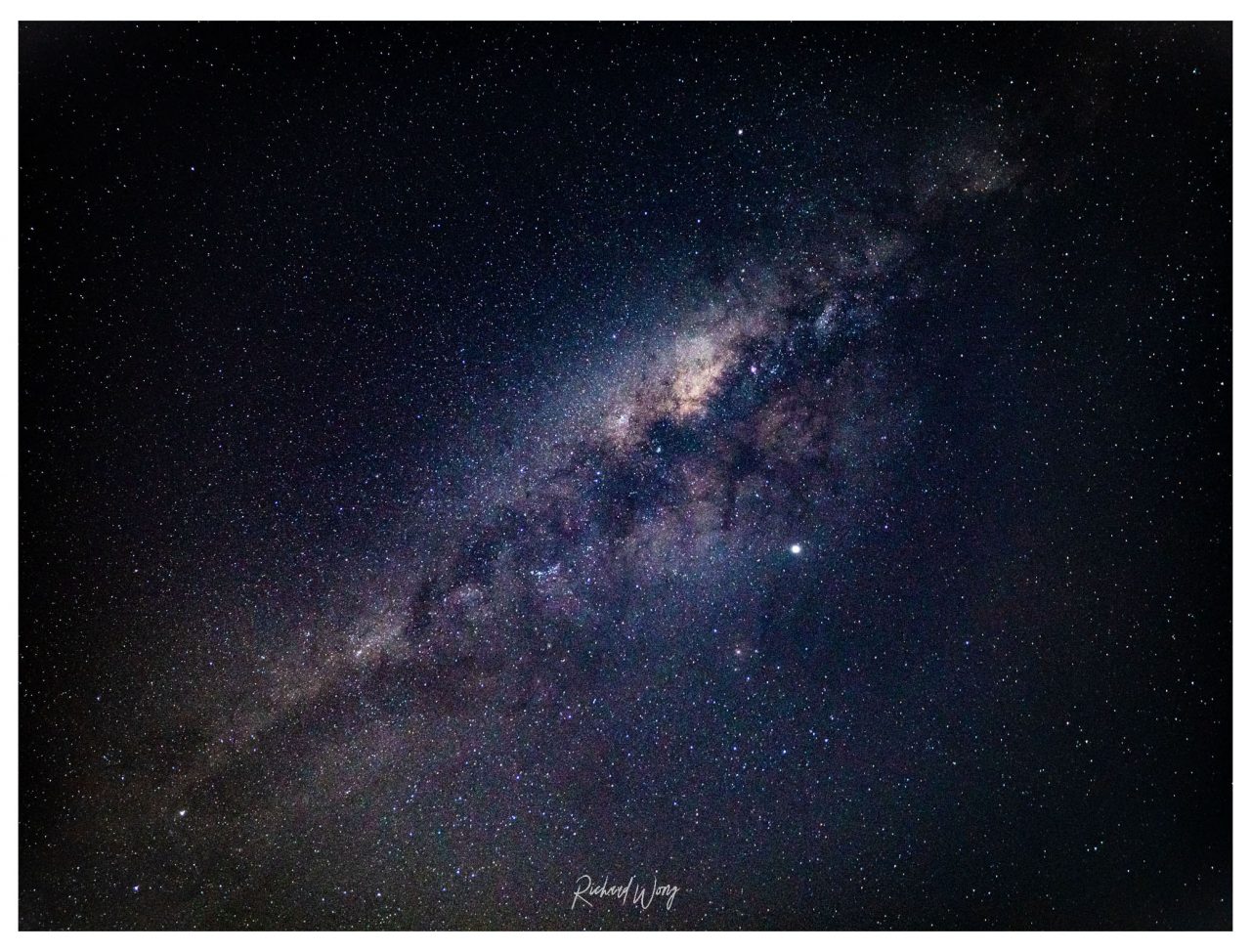
Video
With the de-clicked aperture ring, it’s quite obvious Panasonic put a lot of effect into making it a great lens for videographers. And because it’s also a wide angle lens, so vlogging should also be great, so here is first my vlogging video test
Apart from declicked smooth aperture control, and constant aperture, another thing very important for videographers is the amount of focus breathing. So I did a few testings and found the focus breathing is indeed very minimal. This is a test at 25mm to see how much focus breathing. I did a focus pull from 1.5m to infinity, as you can see, there is very minimal amount of focus breathing. Compare it with the Leica 25mm f/1.4, you can see the difference between a normal lens compare to a lens designed for videography.
Conclusions
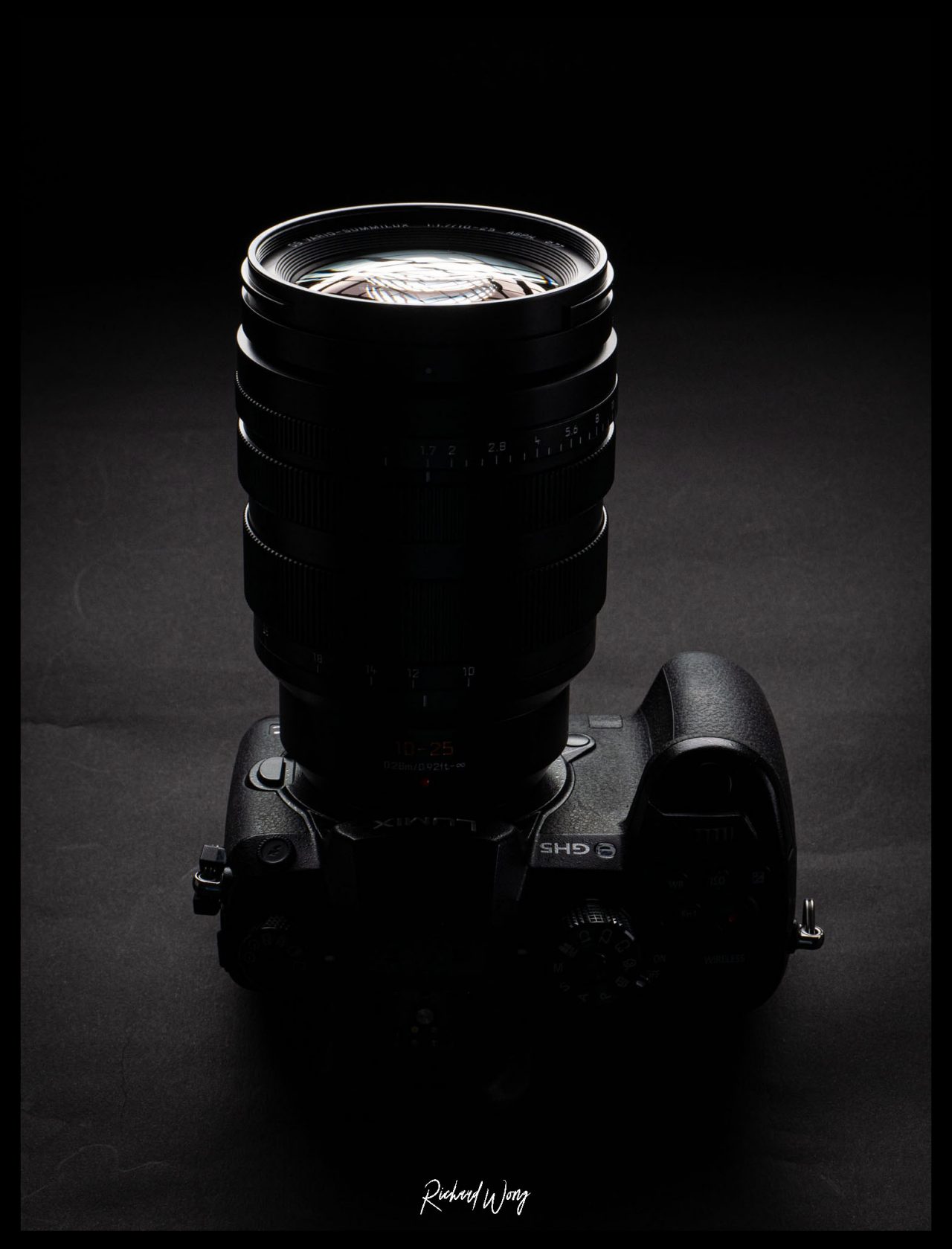
Being one of the biggest, heaviest and most expensive lens for the micro four thirds system, the Leica 10-25 f/1.7 is not designed for average users. But is it really big, heavy and expensive? it depends on how you look at it.
For a lot of photographers and videographers, you will have a few fast wide angle to standard prime lenses. A 12mm, 15mm 20mm and 25mm. Pick three or four of these lenses, the total size, weight and price would be very similar to the Leica 10-25mm f/1.7. If you look at it this way, the lens is not really more expensive, heavier than those. And you don’t have to swap lenses all the time.
For photographers that shoot weddings, documentary, the lens covers the most frequently used focal length. It allows the photographer to just use one lens instead of having to carry multiple and have to swap all the time.
For videographers, a pretty popular lens setup would be the Sigma 18-35 + speedbooster adapter.
The Sigma combo would be quite a bit cheaper and give you slightly faster aperture after combining with the speedbooster. But it is also a lot heavier, larger and has a lot of focus breathing. The Leica would also give you better focusing control, both during manual and autofocus and a nice de-clicked aperture ring. Leica’s image quality should also be a lot better especially it doesn’t need to use a speedbooster in between the camera and the lens which degrades the image quality quite a bit especially when under challenging lighting condition.
When Panasonic told me about this lens, they told me this is a lens that can replace multiple prime lenses. I was skeptical because zoom lens rarely can match the quality of prime lens. But after testing this lens, I agree with them. If you are a pro photographer or videographer who is currently rely on multiple prime lenses within this focal length range, I think you should consider switching to this amazing lens. It would make your life a lot easier without sacrificing the image quality
Sample Photos
